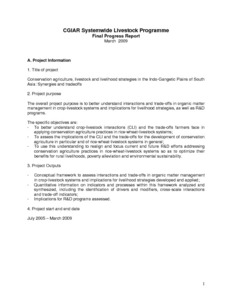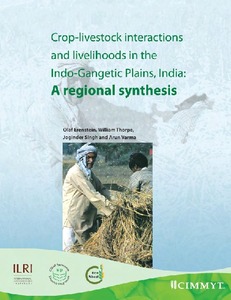Location
US Postal address:
C.I.P./Mexico/ AP # 370
P.O. Box 60326
Houston TX 77205 U.S
CIMMYT works throughout the developing world to improve livelihoods and foster more productive, sustainable maize and wheat farming. Our portfolio squarely targets critical challenges, including food insecurity and malnutrition, climate change and environmental degradation.
Through collaborative research, partnerships, and training, the center helps to build and strengthen a new generation of national agricultural research and extension services in maize- and wheat-growing nations. As a member of the CGIAR System composed of 15 agricultural research centers, CIMMYT leads the CGIAR Research Programs on Maize and Wheat, which align and add value to the efforts of more than 500 partners.
Turning research into impact
- By conservative estimates, this work provides at least $2 billion in annual benefits to farmers.
- CIMMYT alumni include a Nobel Peace Prize laureate and three World Food Prize winners.
- CIMMYT’s success depends on the longstanding partnerships and trust of public agricultural research systems, private companies, advanced research institutes and academia, and non-governmental and farmer organizations.
- More than 70 percent of the wheat grown in developing countries and more than 50 percent of improved maize varieties derive from CIMMYT breeding materials.
- More than 10,000 scientists have trained at CIMMYT and gone on to become leaders in their own countries. The center empowers thousands of students, extension workers and farmers through courses, workshops and field days.
Members:
Resources
Displaying 16 - 20 of 38Conservation Agriculture, Livestock and Livelihood Strategies in the Indo-Gangetic Plains of South Asia: Synergies and Tradeoffs: CGIAR Systemwide Livestock Programme, Project Final Progress Report 2009
Crop-livestock interactions and livelihoods in the Indo-Gangetic Plains, India: A regional synthesis
The research and development community faces
the challenge of sustaining crop productivity
gains, improving rural livelihoods, and securing environmental sustainability in the Indo-Gangetic Plains (IGP). This calls for a better understanding of farming systems and of rural livelihoods, particularly with the advent of, and strong advocacy for, conservation farming and resource-conserving
technologies. This report presents a regional
Crop-livestock interactions and livelihoods in the trans-Gangetic Plains, India
The research and development community faces the challenge of sustaining crop productivity gains, improving rural livelihoods and securing environmental sustainability in the Indo-Gangetic Plains (IGP). This calls for a better understanding of farming systems and of rural livelihoods, particularly with the advent of, and strong advocacy for, conservation farming and resource-conserving technologies.
Effects of conservation tillage on water supply and rainfed maize production in semiarid zones of west-central Mexico
This study analyzes the potential of conservation tillage (CT) for improving maize productivity under a range of soil and rainfall conditions in a semiarid zone of West-Central Mexico, evaluating the consequences of tillage practices on the crop's ability to take up and store water, on evapotranspiration, on crop physiology, and on grain yield, under cropping systems typical of small-scale farmers.
Identifying appropriate germplasm for participatory breeding: An example from the Central Valleys of Oaxaca, Mexico
Identifying the appropriate germplasm to be improved is a key component of any participatory breeding effort because of its implications for impacts on social welfare and genetic diversity. This paper describes a method developed to select a subset of 17 populations for a participatory breeding project from a set of 152 maize landraces. The larger set of landraces was collected in order to characterize, for conservation purposes, the maize diversity present in the Central Valleys of Oaxaca, Mexico.






